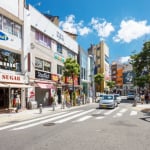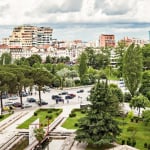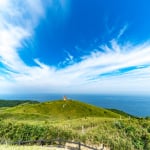Name: Island of Mozambique
Address: Bairro Das Travessas, Mozambique Island, Nampula Province, Mozambique
Official/Related Site URL: https://goo.gl/o9pSR3
World Heritage Site: Mozambique Island! A Portuguese Trading Hub with Historical Ties to Japan
table of contents
[x] close
World Heritage Site: Mozambique Island! A Portuguese Trading Hub with Historical Ties to Japan

The foundations of modern-day Mozambique Island were laid in 1498 when Vasco da Gama pioneered the Cape Route, but prior to that, it was already home to an Arab trading port. In 1507, the Portuguese built a fortress and a naval base, establishing the island as a hub for maritime trade. It also became a base for Jesuit missionary work, and well-known missionaries in Japan such as Francis Xavier and Alessandro Valignano are said to have stayed on Mozambique Island.
Though the island thrived as the capital of Portuguese East Africa, it rapidly declined after the opening of the Suez Canal in 1869. By 1898, the capital had been relocated to Lourenço Marques (modern-day Maputo), and Mozambique Island lost its importance as a trading city. As a result, it suffered minimal damage during the post-independence civil war, and it retains its historic townscape and architecture as a World Heritage Site.
Access to Mozambique Island
To visit the World Heritage Site Mozambique Island, you first aim for the city of Nampula, about 100 km west. Nampula Airport has flights from Maputo, the capital of Mozambique, as well as from Johannesburg, Nairobi, and Dar es Salaam. There is also Nacala Airport, which is geographically closer to the island, but it only connects with Maputo.
From both airports, you’ll need to travel by car to reach the island. Buses or tour services are options, but if you’ve booked a hotel on the island, requesting a pick-up is a good idea. The drive from Nampula to Mozambique Island takes approximately 3 hours. The island is connected to the African mainland by a bridge about 3 km long, allowing direct vehicle access. However, the bridge is only wide enough for a single car, so heavy usage is not recommended.
Recommended Spot ①: Fort São Sebastião
Fort São Sebastião is a solid fortress built at the northern tip of Mozambique Island. Constructed by the Portuguese in the 16th century, it famously repelled Dutch attacks in 1607 and the following year. The white-walled buildings, made of limestone and wooden beams, are striking, and the views of the Indian Ocean from the bastions are stunning.
Inside the fort, however, you’ll find remnants of a colonial past, including an execution ground and rooms where slaves were held. While it's one of the island’s most iconic tourist attractions, recent plant overgrowth has caused significant damage, putting it at risk of deterioration. Interestingly, Japan is funding restoration work, reaffirming the historical link between Japan and Mozambique after several centuries.
Recommended Spot ②: Palácio de São Paulo
In the heart of Mozambique Island’s old town stands the Palácio de São Paulo, a red-walled building that clearly stands out. It was originally a Jesuit school named after Francis Xavier, but as the Jesuits' influence declined, it was converted in 1610 into the residence of the Portuguese commander.
Today, it functions as a museum alongside an adjacent chapel. Exhibits include furniture and artworks collected from Portugal, India, and Arabia, offering a glimpse into the flourishing trade era of Mozambique Island. It's an essential stop for anyone staying on the island, and a full interior tour is highly recommended.
Recommended Spot ③: Chapel of Nossa Senhora de Baluarte
Just beyond Fort São Sebastião, under a bastion, stands a small white building: the Chapel of Nossa Senhora de Baluarte, built in 1522. It is considered the oldest European structure in the Southern Hemisphere.
Since Francis Xavier arrived in Japan in 1549, it’s likely that both he and members of the Tenshō Embassy would have seen this chapel. For Japanese visitors, it is a historic building that evokes a sense of familiarity.
Though weathered and modest in appearance, the chapel’s interior is open to visitors. Thinking about the missionaries who departed from here to Asia, driven by their mission to spread the faith to unknown lands, is deeply moving.
◎ Summary
Mozambique Island has a distinctly different atmosphere between its northern and southern parts. The ruins of the Portuguese port town are concentrated in the northern half, where you’ll also find resorts and hotels.
In contrast, the southern half is a local area where many of the island’s fishermen live. While there are fewer World Heritage attractions here, the authentic daily life of Mozambique can be observed—making it a valuable cultural experience in its own right.
RELATED ARTICLES
REGIONS
CATEGORIES
FEATURED ON Mozambique
-
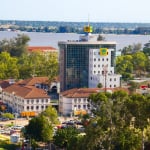
Feel the History in Mozambique’s Capital City! 6 Recommended Sightseeing Spots in Maputo
-
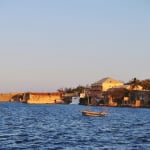
The gateway to the World Heritage site of Mozambique! 3 recommended tourist spots to visit from Nampula
-
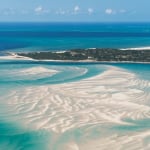
8 recommended tourist spots in Mozambique! Enjoy marine sports!
-
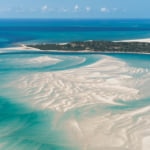
The Best Beach Holiday Destinations in Africa
-

5 Underrated African Destinations You Need to Add to Your Bucket List
MOST POPULAR ON Mozambique
-
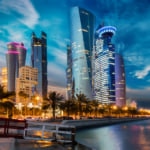 1
1Doha: Must-see Attractions in the Capital of Qatar
-
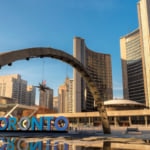 2
2Toronto: 10 Things to do in this Picturesque Canadian City
-
 3
3Amarillo: A City Famous for It’s Amazing Canyons, Great History and Music
-
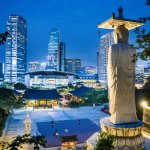 4
4South Korea: Dazzling Scenery, Rich Culture and Fascinating History
-
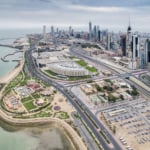 5
5Kuwait: A Country in Middle East Asia Famous for Hot Sand Dunes and Stunning Cityscape


